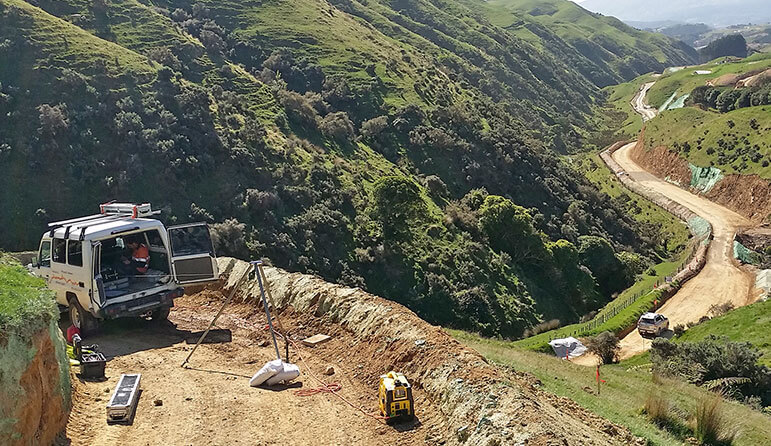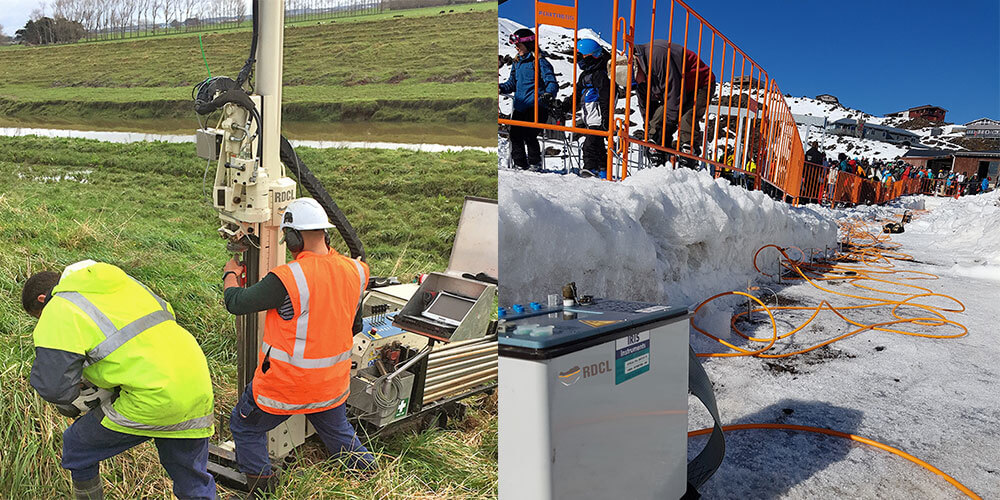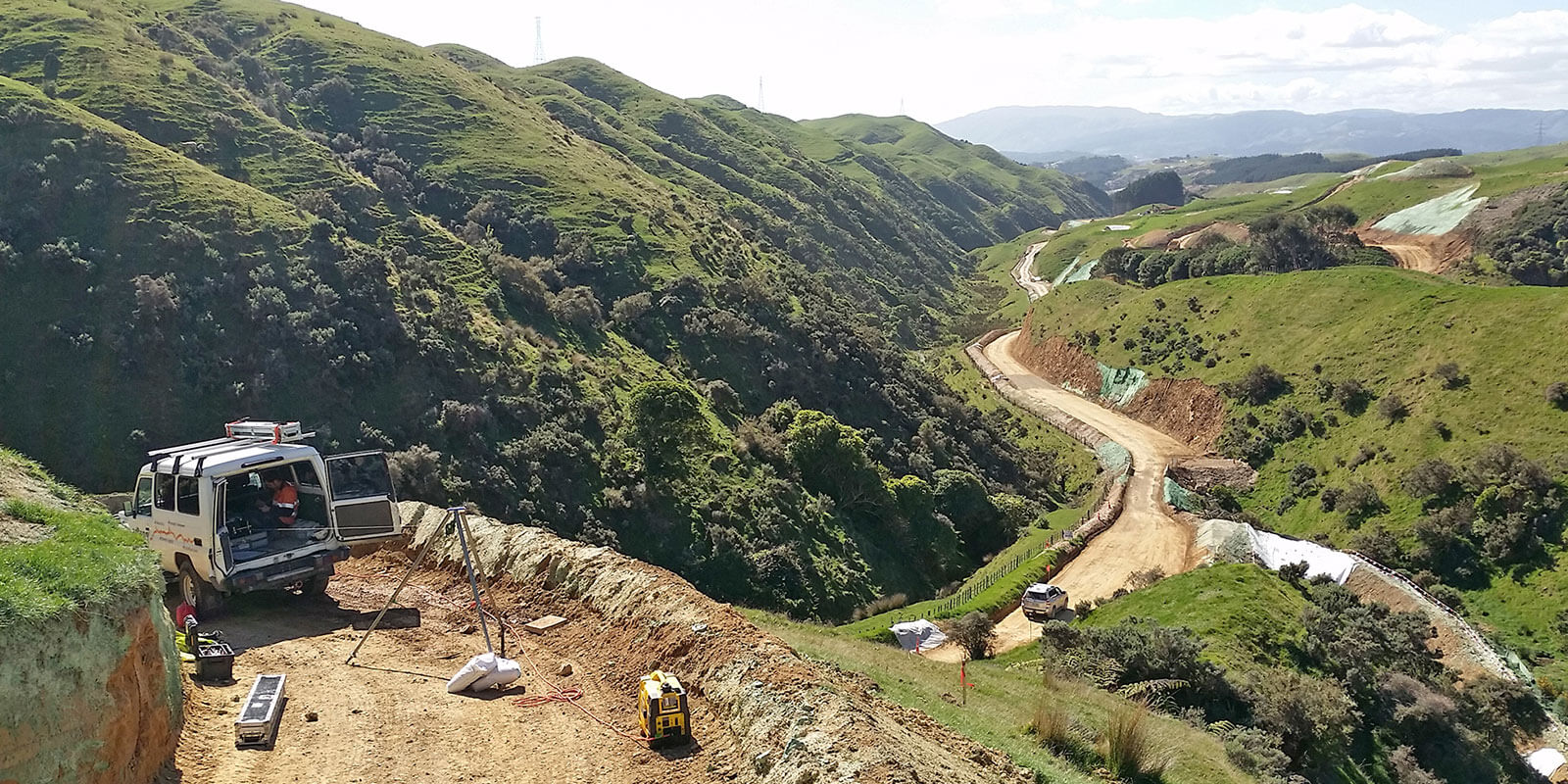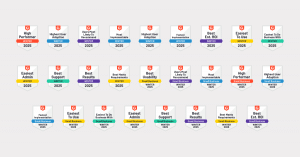The nature of work a geotechnical engineering company undertakes typically means lots of short jobs repeated often. In the case of New Zealand-based RDCL and its 23 staff, that can be over 45 jobs per month.
The issue engineering and other design practices face when delivering a high volume of projects is understanding performance — of the project, staff and customer. RDCL recently changed project management software to improve the visibility the business has into its performance, and to find efficiencies in delivering and reporting on projects.
BREAD AND BUTTER
RDCL is a geotechnical engineering company based in Hawkes Bay and Wellington (NZ) and with operations in the Philippines. Its customers are structural engineers, civil engineers, councils, architects and one-off private clients with private subdivision jobs.
According to RDCL ground testing business manager Logan McLennan, 50 percent of the company’s revenue is from larger geotechnical engineering and structural projects, and the other 50 percent is from one-off projects.
“We carry out a lot of one-off projects that are typically half a day to a full day of site work, followed by a few days of office work writing reports,” McLennan said.
“We complete anywhere between 30-45 of those small jobs a month at the moment, far greater than the previous year, hence tracking performance is vital to ensure quality and client satisfaction is upheld while maintaining budgets. We apply the same approach to our larger scale geotechnical engineering projects.”
BLIND SPOT
RDCL recently moved to Synergy from a different workflow management software. The problem they needed to solve was limited visibility into actual costs — a business blind spot.
In their previous system, they couldn’t clearly see which jobs and staff were performing effectively, which meant there was too much guesswork in which jobs and staff were effective and efficient. In other words, profitable.
They chose Synergy as it enabled them to run better costing reports on projects and offered opportunities for document management and project collaboration.
“Despite our previous software linking well to our accounting software, it fell short as it didn’t have any forecasting and flexibility,” McLennan said.
“We need the ability to weight projects and ensure we’re assigning the right assets to the right projects. Without doing that, we’re not delivering the work effectively, which could affect business and ultimately affect our customers.”
The critical business issue engineers and built environment design practices face is that not all projects are delivered equally, nor do all staff perform equally. For a growing practice like RDCL — doubling its project volume in 2018 —more work doesn’t necessarily translate to business growth.
Understanding staff and project performance means the business can be strategic in how it tenders for projects and deliver accurate, data-based fee proposals that factor future workloads, fees, capacity and revenue into the mix. It’s a significant advantage to be able to do that quickly through integrated project data gathered in a central system designed for this type of business.
MINIMIZE RISK, IDENTIFY OPPORTUNITY
With a team of geotechnical engineers, engineering geologists and geophysicists, a lot of the focus for RDCL is booking time. While it costs more to deliver field work, there’s no separation of skills between field engineering and report writing.
Logan explained that a typical job for RDCL consists of five hours on a subdivision project on site, then six to ten hours of producing a report.
“The key to running a high number of short projects is booking time — we use our timesheets quite accurately for working out all the transaction costs, and so we can see our actual costs against the budgeted cost, which is working well with Synergy,” he said.
“Previously, we’d never really captured a lot of those transactional costs to the same efficiency and our budgets were more top down driven, not built bottom up. Now we can see where the cost overruns are instead of just looking at the end of the month and finding we had less billable time than we anticipated. For example, we can see if we overran on a job because we put the wrong person on that task when we budgeted for a lower rate, or they spent five hours on the job instead of three.”
The benefit of clarity in your business performance, and in being able to forecast your revenue and capacity, is identifying future risk and planning accordingly. 75 percent of RDCL’s customers account for only 50 percent of the company’s revenue — this clarity enables the business to identify the more profitable customers and projects and target more of the same.
TIME SAVINGS
Of course, this kind of detail takes time to put together, especially if relying on partial or disparate data from multiple sources tied into complex spreadsheets. Professional services businesses serving the built environment design sector need to find more time to deliver billable work.
The main time saving RDCL has realised as a result of switching to project management software designed for their way of working, so far, comes from running reports to analyse the profitability of certain tasks, projects and staff and understand the overruns in particular stages of the project.
“With Synergy, we can pull out either a month’s worth of work in one report, or we can just do individual projects summary reports, and see actual costs against the budget,” McLennan said.
“We weren’t able to do this previous to same level of detail and we couldn’t drill down into the costs.”
“We break out all the tasks so they’re available in a drop-down list in timesheets, instead of just randomly typing in a task — this makes it faster to compile and analyse this critical data, and the quality of that data is a significant improvement,” McLennan said.
Prior to Synergy, RDCL had to run an estimated billing report — a time consuming process that required a lot of interaction with spreadsheets and static data to modify outputs and assign costs against it.
“The only way we could work out productivity against profitability was to manually export the data to figure out the number of hours that somebody has booked in, load it all into Excel, then manually work out their cost base per hour, and then see what came out. You had to run a lot more manual calculations.”
And how often did he choose to do that?
“Well, not often,” he said.
“It was a monthly exercise at best and was reactive, not proactive or real time.”
Synergy’s budget versus actuals report enables management teams to review project health in real time on-screen, spot any issues, and begin to address them by drilling into the projects.
“From that perspective, it enables us to ensure we price projects correctly and look into ways we can be more efficient with resourcing. We can very quickly see which staff members are working well and which staff members are overworking to get the same result.”
It’s this clarity through real time, accurate, and detailed business and project data, that allows RDCL to grow confidently, plan its hiring to match, and not just take on more work in the belief that being busy means being profitable.
FUTURE OUTCOMES
For continued time savings, Logan’s hope is to sync Synergy with Xero (accounting software), which will potentially save days of time per month by simply removing the need for double entry of invoicing and payments.
In early 2019, the company is rolling out the document management and project portal side of Synergy — all of which is included — to improve how they track and manage documents and project communications. The project portals reduce the reliance on email, while providing and auditable, simple source of truth for project communications.





